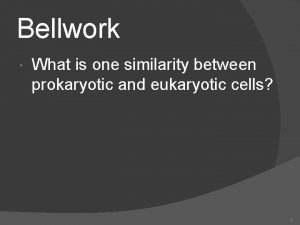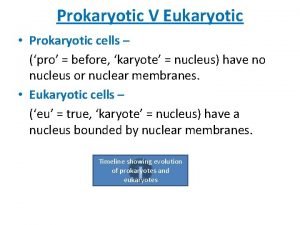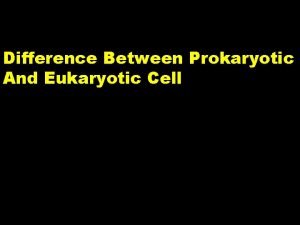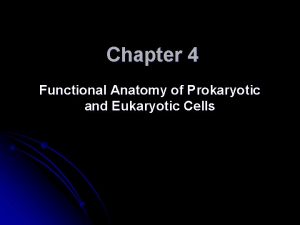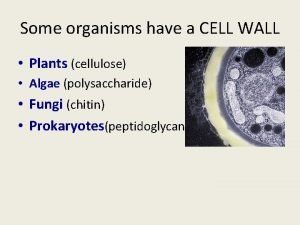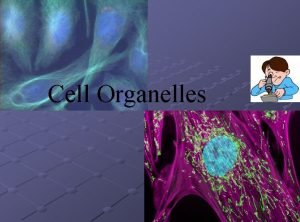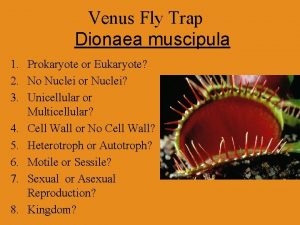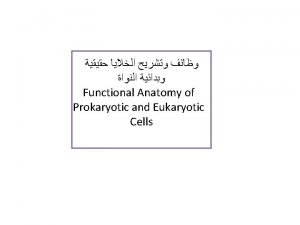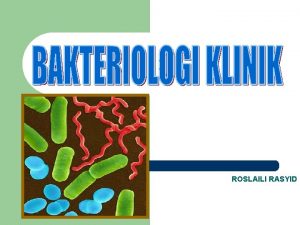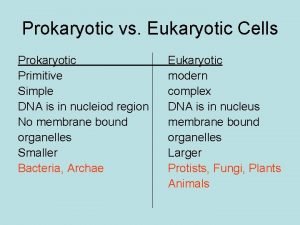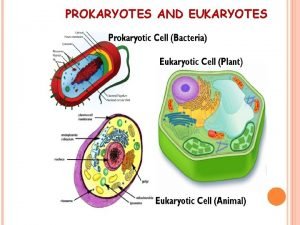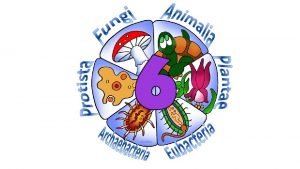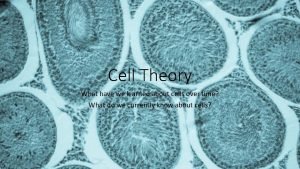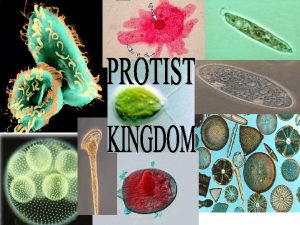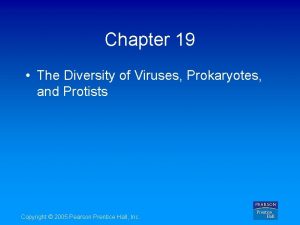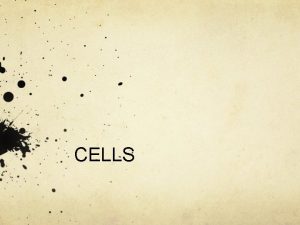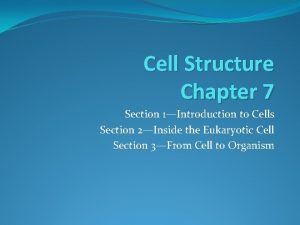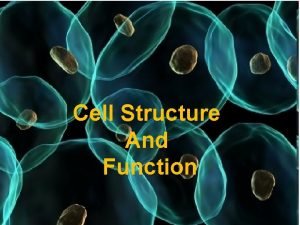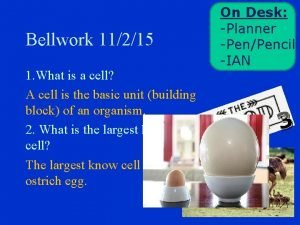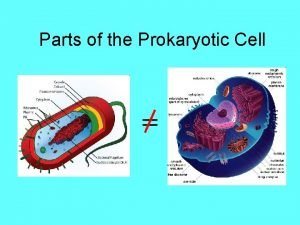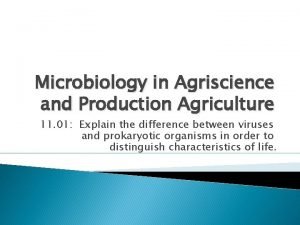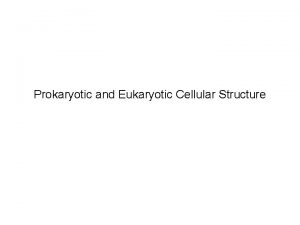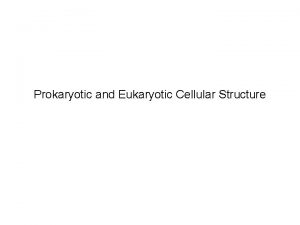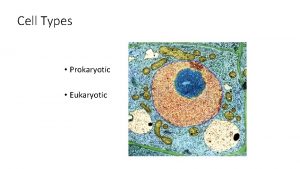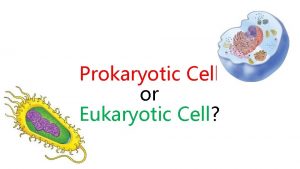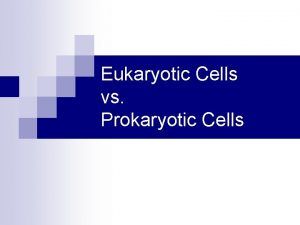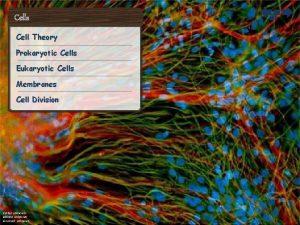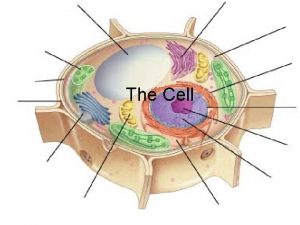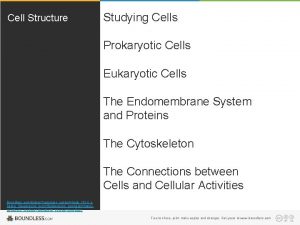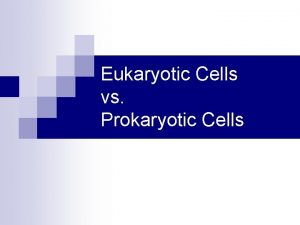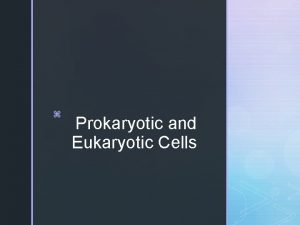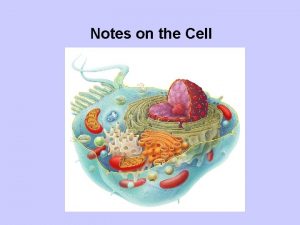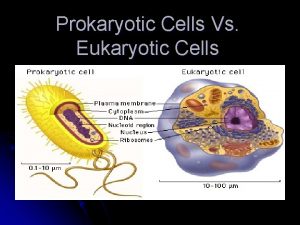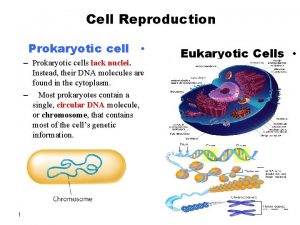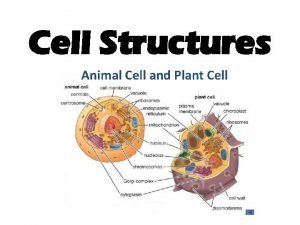THE CELL Cell Theory Prokaryotic Cells Eukaryotic Cells







































- Slides: 39

THE CELL ■ Cell Theory ■ Prokaryotic Cells ■ Eukaryotic Cells

CELL Latin for “small room’’ A cell is the smallest unit that is capable of performing life functions. Found as early as 1632 by Antony van Leeuwenhoek

WHAT ARE THESE LıFE FUNCTıONS? Metabolism Response Homeostasis Growth Reproduction Nutrition

CELL THEORY ( Shwann | Shleiden | Virchow ) Those early scientists did experiments on living things and developed ‘CELL THEORY’ 1. 2. 3. The cell is the basic unit of structure. The cell is the basic unit of function. All cells arise from pre-existing cells.

WHAT ARE CELLS MADE OF? Cells are mostly water. The rest of the present molecules are : Protein Nucleic Asid Carbohydrate Lipid

CELLS AND SIZES

CELLS AND SıZES Atoms --> DNA --> Virus --> Bacteria (Prokaryotes) ->Mitochondria--> Eukaryotic cells Cells must remain small in size due to the ratio of surface area and volume.

CELLS AND SıZES As the cell increases in size, its surface area becomes too small to support its internal structures. Oxygen and other important substances cannot diffuse fast enough. Cells that get too large, may divide. Transportation problems across the cell membrane Diffusion problems inside the cell

All Cells Have Three Basic Features: Cell Membrane Genetic Material Cytoplasm Genetic Material Cell Membrane

Plasma Membrane (Cell Membrane) ▪ Isolates cytoplasm from external environment ▪ Regulates flow or material into and out of the cell ▪ Allows interaction with other cells Plasma Membrane

Genetic Material ▪ Carry the information that determines what traits a living thing will have ▪ In the form of DNA (Deoxyribonucleic acid) ▪ DNA is universal for all cells, an all living things evidence of common ancestry

Cytoplasm ▪ Inside plasma membrane ▪ Contains water, salts, and other chemicals ▪ Organelles float within this jelly-like substance Cytoplasm

PROKARYOTIC CELLS They were the first organisms to evolve on Earth and still have the simplest cell structure. Pro – karyote: Before – Nucleus Small in size (<1 µm) Unicellular Found in almost everywhere!

FEATURES OF PROKARYOTİC CELLS Cell wall Plasma Membrane Flagella Ribosomes Nucleoid (A region containing free DNA)



CELL WALL Always present Protects the cell Maintains its shape Prevents cell from bursting

RIBOSOMES Small granular structures (70 S) Smaller than eukaryotic ribosomes (80 S) Synthesize proteins Have no membrane in prokaryotes

NUCLEOID Region of cytoplasm containing the genetic material (usually one molecule of DNA) Circular DNA Total amount of DNA is much smaller than in eukaryotes

PILI Protein filaments protruding from the cell wall Used for cell to cell adhesion Used when two cells are exchanging DNA during conjugation

FLAGELLA Structures protruding from the cell wall with a spiral shape Using energy they can be rotated, to propel the cell from one area to another Unlike eukaryotic flagella, they are solid and inflexible

Pili Nucleoid region and DNA Cytoplasm Ribosomes



EUKARYOTIC CELLS Has a membrane bound nucleus Has membrane bound organelles in cytoplasm Much larger than prokaryotes Animals, Plants, Fungi, Protists

ORGANELLES OF EUKARYOTIC CELLS Endoplasmic Retikulum Ribosomes Lysosomes (Not usually in plant cells) Golgi Apparatus Mitochondria Nucleus Chloroplasts (Only in plant and algal cells) Centrosomes Vacuoles

CELL MEMBRANE Chemical components : consists of 60% protein 35% phospholipid and 5% polysaccharides

CELL MEMBRANE The cell membrane is the boundary of the cell. It acts as a “gatekeeper”, preventing the entry or exit of some molecules and facilitating the movement of others. It is selectively permeable.

FLUID MOSAIC MODEL Hydrophobic tails of two layers of phospholipid molecules point inward to form a phospholipid bilayer , while the protein molecules is embedded in the phospholipid bilayer or transmembrane. ▪ Fluidity: due to the lateral movement of phospholipid molecules. ▪ Mosaic : protein molecules are interspersed among phospholipid molecules.

NUCLEUS ▪ The “brain” of the cell ▪ Controls all of the cellular activities ▪ DNA is inside the nucleus ▪ It is the largest organelle ▪ It has a double layer membrane The bright blue stains are nuclei in He. La cells. Read “The Immortal Life of Henrietta Lacks” for a fascinating story of the origin of He. La cells

MITOCHONDRION (PL. MITOCHONDRIA) • • • The ‘power house’ of the cell Has a smooth outer membrane and a folded inner membrane Where aerobic respiration occurs in the cell

ENDOPLASMIC RETICULUM Rough Endoplasmic Reticulum ▪ Protein synthesis occur Spot the difference? Smooth Endoplasmic Reticulum ▪ Collect ▪ Transport

RIBOSOMES ▪ Responsible for protein synthesis ▪ Small dot-like structures in cells ▪ They are often associated with forming Rough ER A ribosome on the sculpture “Waltz of the Polypeptides” at Cold Spring Harbor Laboratory

GOLGI APPARATUS The Golgi Apparatus is a flattened stack of membranes responsible for the packaging and delivery of proteins

LYSOSOMES Lysosomes are full of enzymes that digest engulfed bacteria and viruses and large molecules for recycling.

CHLOROPLAST The site of photosynthesis in eukaryotic cells Bounded by two membrane Containing chlorophyll which absorb light for photosynthesis

COMPARıSON BETWEEN PROKARYOTıC AND EUKARYOTıC CELLS Prokaryotic Eukaryotic Small cells Relatively larger cells Always unicellular Some multicellular, some unicellular No nucleus: DNA a ‘naked’ loop in the nucleoid region DNA in chromosomes in a membrane-bound nucleus Ribosomes smaller (70 s) Ribosomes larger (80 s) No mitochondria, respiration in cell membrane and mesosomes Mitochondria, where aerobic respiration occurs Cell division by binary fission Cell division by meiosis or Mitosis Reproduction asexual (some gene exchange can occur via conjugation) Reproduction Sexual or asexual

COMPARıSON BETWEEEN PLANT AND ANıMAL CELLS Animals Plants Have a cell wall Don’t have a cell wall Have chloroplasts in photosynthetic cells Don’t have chloroplasts anywhere Carbohydrate stored as starch and plant oils Rigid Shape (due to cell wall) Have a large permanent storage vacuole Carbohydrate stored as glycogen and animal fat Flexible shape May have small, temporary vacuoles

THANK YOU FOR LISTENING BURÇİN GÜMÜŞ
 Prokaryotic versus eukaryotic
Prokaryotic versus eukaryotic Prokaryotic cells
Prokaryotic cells What animals have prokaryotic cells
What animals have prokaryotic cells Prokaryotic vs eukaryotic cells
Prokaryotic vs eukaryotic cells Site:slidetodoc.com
Site:slidetodoc.com Prokaryotic and eukaryotic cells
Prokaryotic and eukaryotic cells Prokaryotic cell and eukaryotic cell
Prokaryotic cell and eukaryotic cell Cell theory 3 parts
Cell theory 3 parts Is protist a prokaryote or eukaryote
Is protist a prokaryote or eukaryote Similarity between prokaryotic and eukaryotic cells
Similarity between prokaryotic and eukaryotic cells Comparison of prokaryotic and eukaryotic cells
Comparison of prokaryotic and eukaryotic cells Prokaryotes vs eukaryotes chart
Prokaryotes vs eukaryotes chart Difference between prokaryotic and eukaryotic cell
Difference between prokaryotic and eukaryotic cell Similarities between prokaryotic and eukaryotic cells
Similarities between prokaryotic and eukaryotic cells Difference between prokaryotic and eukaryotic cells
Difference between prokaryotic and eukaryotic cells Anatomy of prokaryotes and eukaryotes
Anatomy of prokaryotes and eukaryotes Are cell walls prokaryotic or eukaryotic
Are cell walls prokaryotic or eukaryotic Eukaryotic cell
Eukaryotic cell Are plants multicellular eukaryotes
Are plants multicellular eukaryotes Difference between prokaryote and eukaryotes
Difference between prokaryote and eukaryotes Is a venus fly trap unicellular or multicellular
Is a venus fly trap unicellular or multicellular Prokaryotic vs eukaryotic transcription
Prokaryotic vs eukaryotic transcription Monera
Monera Is protozoa prokaryotic or eukaryotic
Is protozoa prokaryotic or eukaryotic What cell type
What cell type Lofotrich
Lofotrich Are fungi prokaryotes
Are fungi prokaryotes The oldest prokaryote is/are:
The oldest prokaryote is/are: Archaebacteria multicellular or unicellular
Archaebacteria multicellular or unicellular Prokaryotic vs eukaryotic
Prokaryotic vs eukaryotic Manitole
Manitole Kingdom animalia eukaryotic or prokaryotic
Kingdom animalia eukaryotic or prokaryotic Protists have nucleus
Protists have nucleus Staphylococcus prokaryotic or eukaryotic
Staphylococcus prokaryotic or eukaryotic Cytoskeleton prokaryotic or eukaryotic
Cytoskeleton prokaryotic or eukaryotic Food vacuole eukaryotic or prokaryotic
Food vacuole eukaryotic or prokaryotic Staphylococcus prokaryotic or eukaryotic
Staphylococcus prokaryotic or eukaryotic Is amphiuma liver prokaryotic or eukaryotic
Is amphiuma liver prokaryotic or eukaryotic Amoeba prokaryotic or eukaryotic
Amoeba prokaryotic or eukaryotic Is green algae prokaryotic or eukaryotic
Is green algae prokaryotic or eukaryotic









